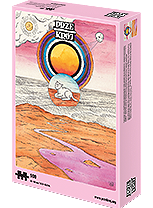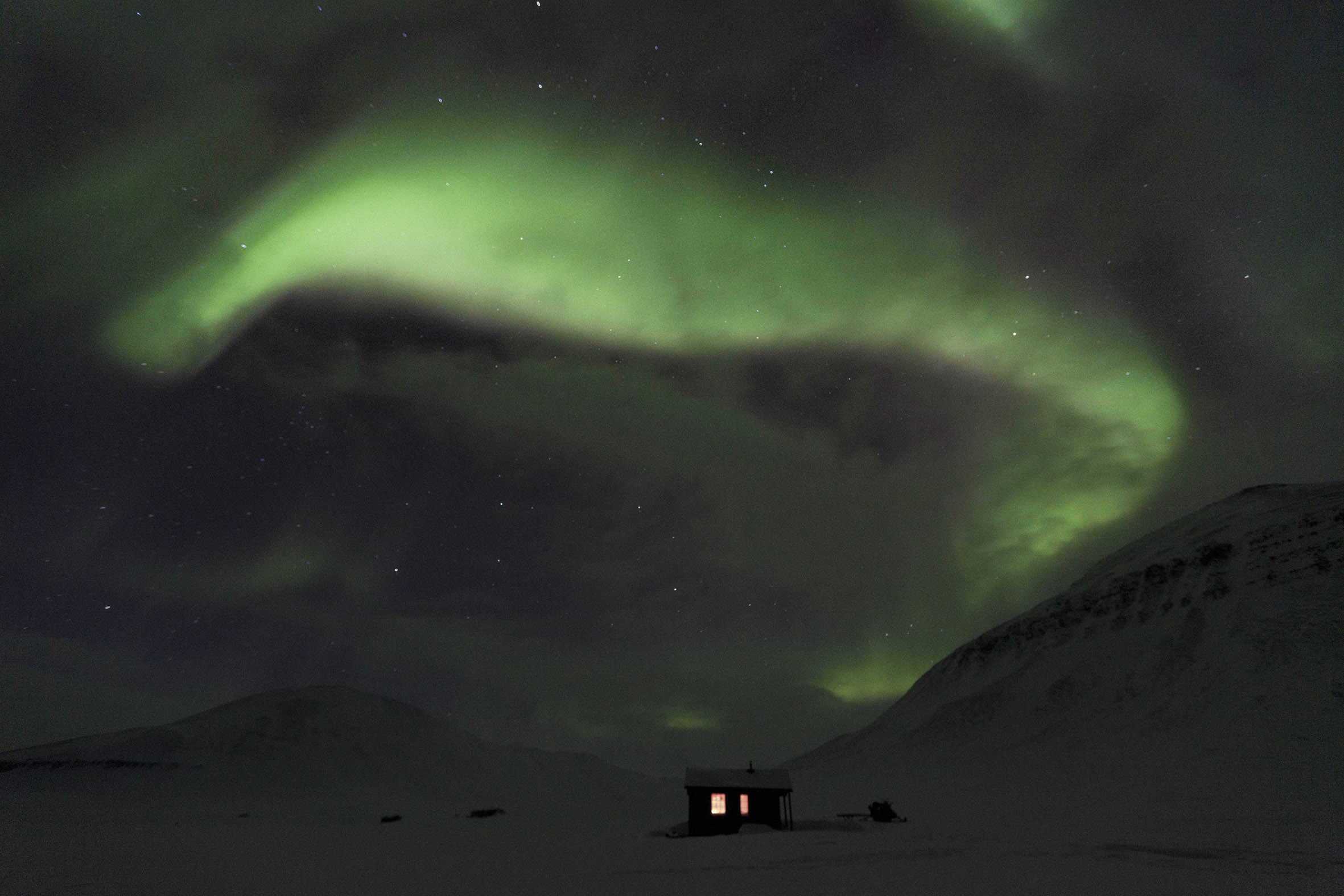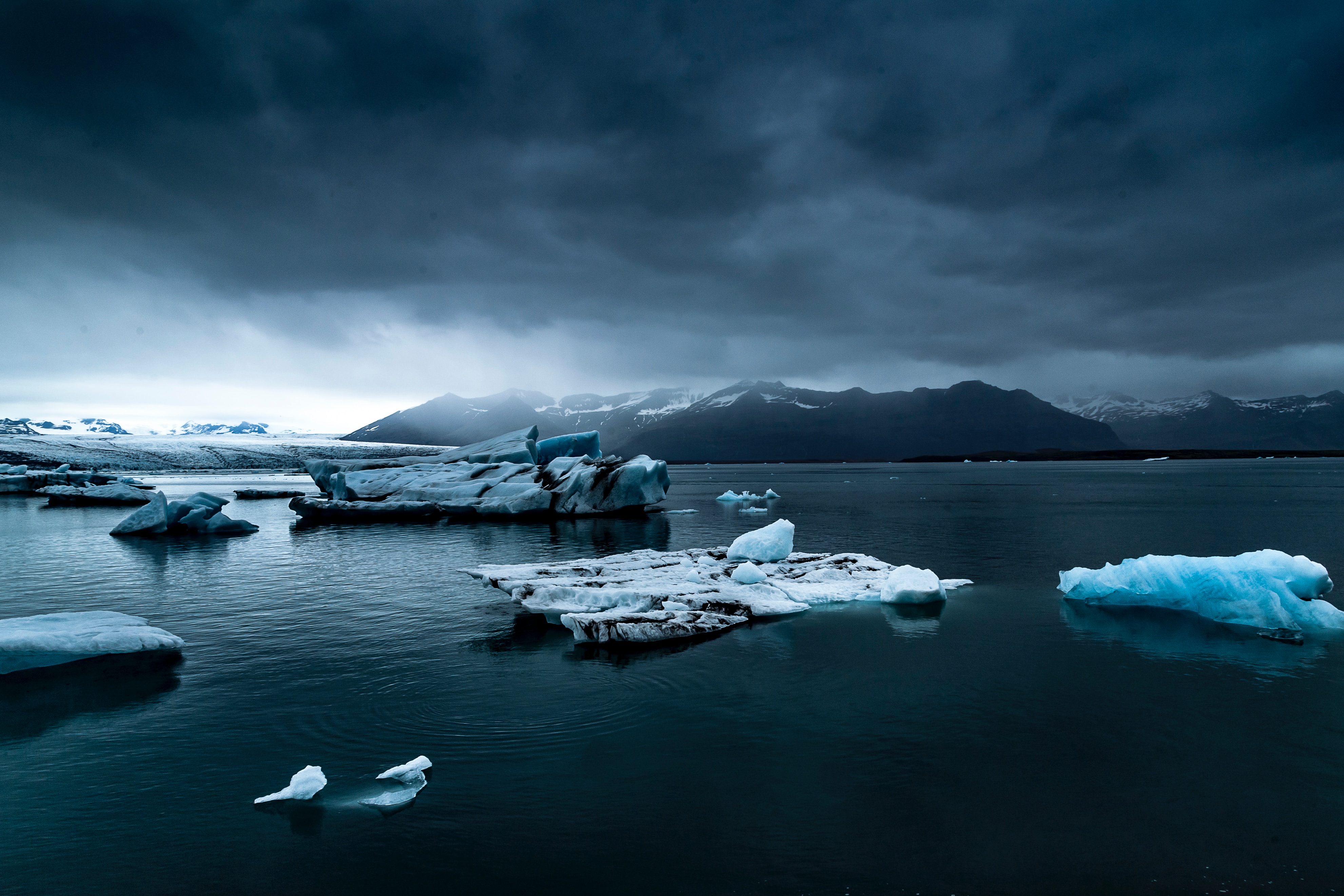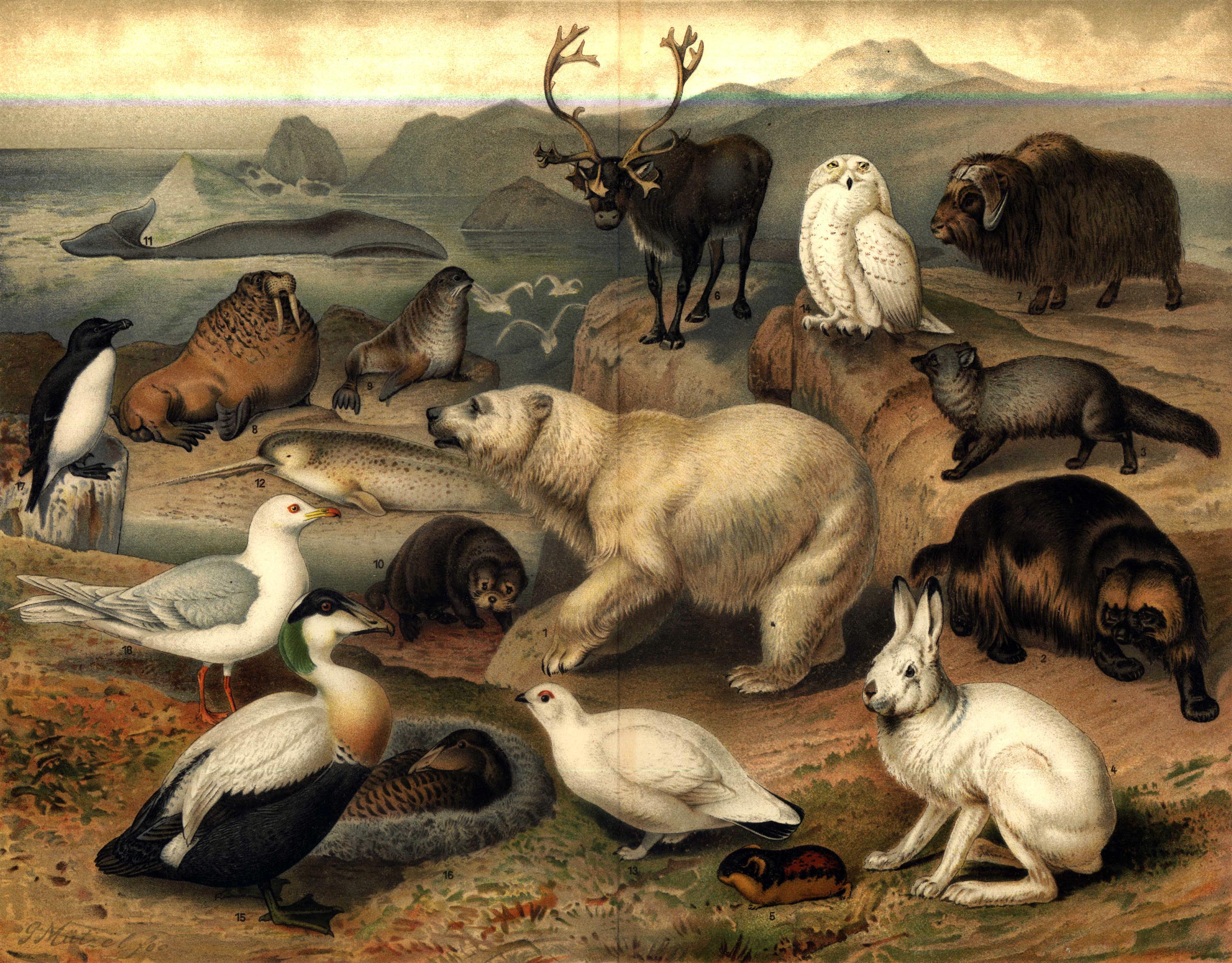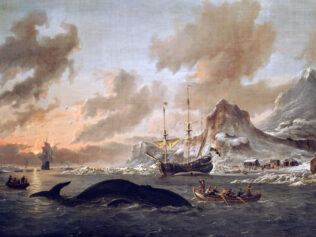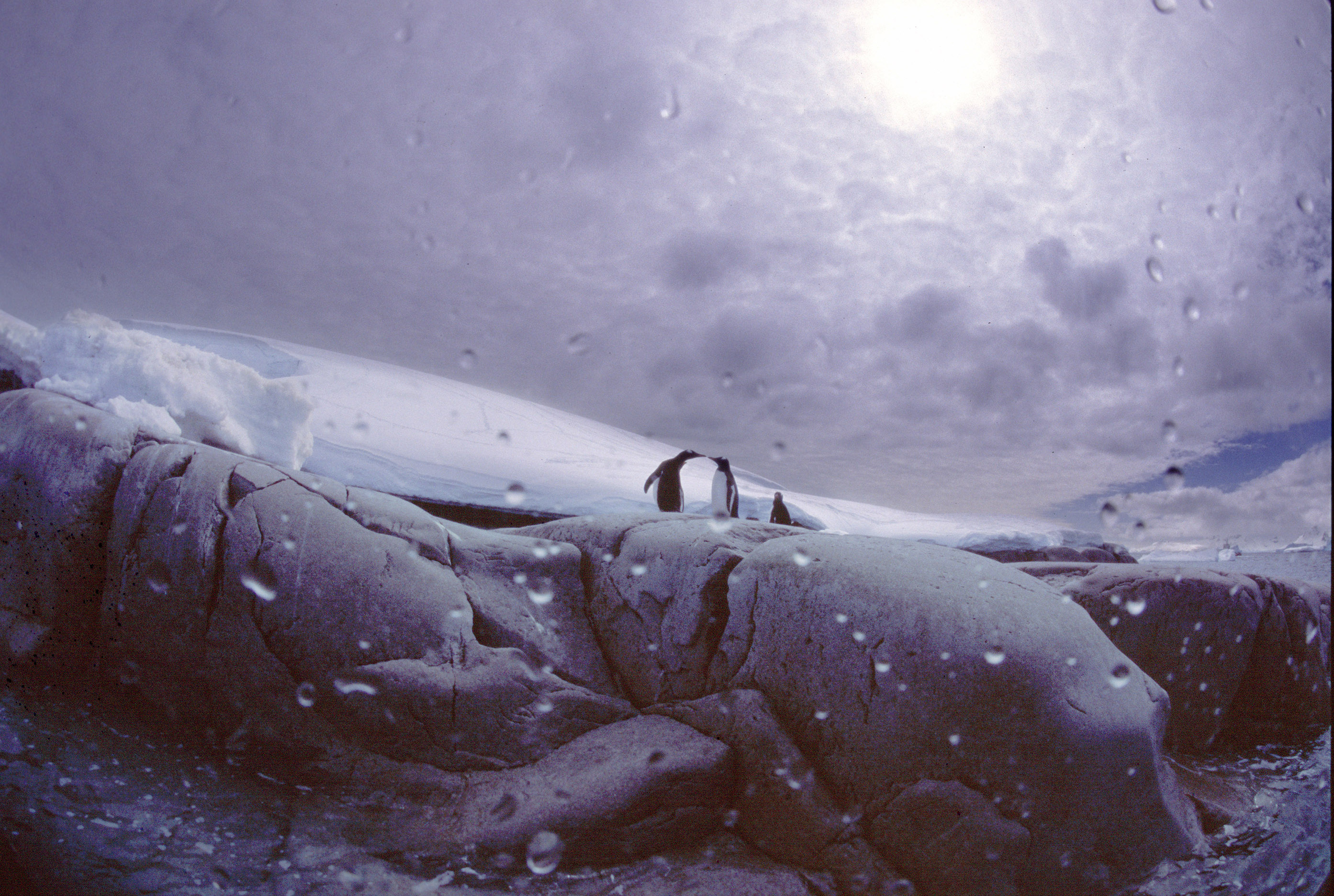
A bench in a park by the Oder river on a sunny afternoon. A lovely backdrop for my conversation with Ilona Wiśniewska about surviving the winter longing for the sun. I want to learn all the tricks this reporter and photographer is hiding up her sleeve. After all, she wrote so beautifully about her experiences with polar nights in her debut book, Białe [White]. Jan Pelczar: What can one do to prepare for the lack of sun?
Ilona Wiśniewska: In Spitsbergen, there is no sun for four months a year, so the most important thing is to enter the darkness gradually. Attitude is equally important. The point is not to view darkness as something unambiguously negative. Once you live there, you realize there is actually a lot of light to be found in a sunless landscape.
And where does it come from?
It comes primarily from the snow that reflects the moonlight, the northern lights, the shades of indigo in the sky, the stars. When it’s really freezing, the sky turns red. In the north, the moon hangs lower in the sky, and it’s visibly larger, casting sharp dark shadows on the ground.
Does one perceive the moon differently in those sunless months?
In the north, especially in the places far from the city, the moon becomes the only source of natural light during the polar night. I could spend hours on end watching it travel across the sky. It’s hypnotizing. I think that almost everyone in the far north has a very special relationship with the moon. I talk to it sometimes. In Poland, the moon is disappearing, blotted out by other sources of light. It becomes really obvious during air travel. In Spitsbergen, I often saw the moon hang low above the horizon, its face huge. And the farther away I got from the north, the smaller it got. And by the end of my journey, back to Poland, it was tiny, looming far away up in the sky. In those moments, the impression that I came from a very distant land was even stronger.
The moon has a certain advantage over the sun when it comes to building relationships with other people. We can stare at it with no consequences.
Yes, and I often feel fed up with the sun, especially in the summer. I always look forward to those first weeks when it begins to set again. I’m overstimulated and tired of it. Over the past decade, my perception of heat has changed, too. Now, I find it exhausting and admire people who enjoy the hot, sticky summers.
You had to leave for Spitsbergen for the first time because Wrocław was too hot for you. Wasn’t it too cold up there in the north, though?
Sure, I found it freezing at first, but it was just a matter of choosing the right kind of clothes. This cold is constant and necessary. It positions you in a good relationship with the world; it’s humbling…
…or makes you try and escape it. In Poland, spending winter months in tropical countries has become fashionable and desired.
Polish winters have changed, while there is still plenty of snow in the north. In Norway, it’s much colder, but you feel less cold. It’s because the air is dry. Over there, people enjoy winter. Of course, just like many other Scandinavians, some Norwegians also make seasonal moves to southern countries, such as Spain. But most of them actually look forward to winter. Yes, it also happens to be dark, but that’s a whole other issue.
How can one remain cheerful despite darkness?
That’s when attitude comes into the equation. Low temperatures and darkness are good for you if we consider the limitation of stimuli, silence and slowing down in general. In early December, people put up plenty of lights in their windows and set up candles by the front door. This way, you can tell there’s someone in. In the north of Norway, nobody despairs. It’s normal that the sun goes down for several weeks.
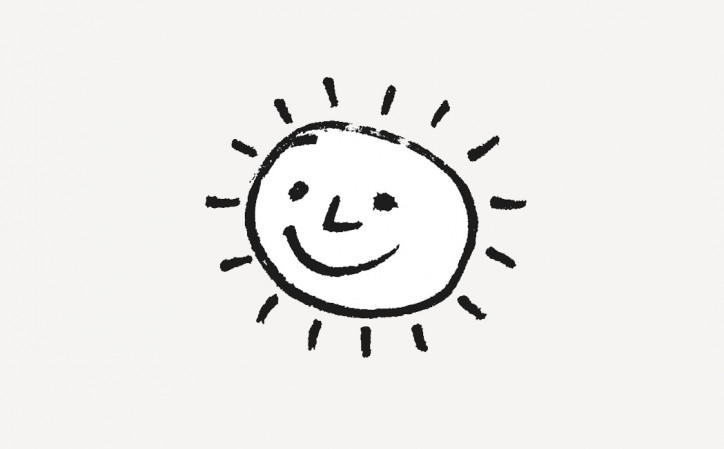
The first time you saw the northern lights, you were surprised. In your book, you wrote: “The mountains glow green. The sky glows green. I glow green! I lie down on the ground to see it better. Damn, nobody ever told me the northern lights move!”
I had only ever seen the northern lights in photos. When I saw them with my own eyes, I found out how quickly they move. I also wrote that they should be accompanied by music to complete the piece of art they actually are.
I noticed that your memories of polar nights from your first years in the north are very different from the later ones. “I was looking forward to the first winter, but I was frightened at the same time. I had never lived without sun before, and I had no idea how it would be,” you admitted. How do you find it today?
I got used to it. Now I look forward to the polar night every year.
Is it possible to adapt to such a drastically different rhythm? I sometimes wish I could have more free time in the summer and just do all those extra chores in the winter when the days are shorter. It doesn’t always work, though. But if it never worked, it would lead to perpetual annoyance.
The people of the north never complain about the weather. There’s no sun? That’s what our year looks like; it’s just the way it is. Outsiders might find it puzzling, but for them, it’s the most regular thing in the world. Also, what good does it make to whine about the weather? Nobody I know would say a bad word about the darkness. When I talk to my friends who have been to the north, they often say: “You’re so lucky, going back to where the light is so beautiful.”
In your book Białe you also wrote: “The darkness is not a problem. The real problem is being lonely in the darkness.”
I have never lived on my own in Spitsbergen, and I never had to come back to a dark, empty house. And I know many people who do live this way, and their stories were usually quite sad. During the polar night, one should try surrounding herself with friends.
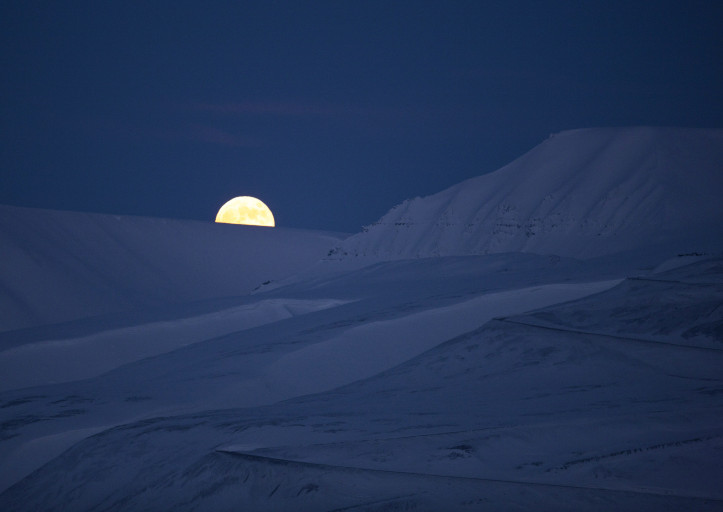
In our perspective, polar days and nights disrupt the circadian rhythm. In our latitude, to live according to nature means being active from sunrise to sunset. How did your body respond to such change? It keeps responding to it, year by year. Sometimes I struggle to wake up, and sometimes I suffer from insomnia. I try to take it all with humility.
Do you sleep more in the winter than in the summer?
I try to get about eight hours’ worth of sleep every day, so in the summer my daily schedule tends to shift, and I’m more active in the night, but I also sleep a bit longer in the morning. In June this year, the Norwegian island Sommarøy made the news – it decided to stop measuring time, since its inhabitants live according to their circadian rhythm anyway, regulated by the polar day and night. The world perked up: it looked like a dream come true about rejecting time as a concept. Nothing limiting us anymore. But later, it turned out to be just a big marketing campaign launched by a large company from the south of Norway. The people of Sommarøy found out about it from the media and found it rather amusing. They laughed and said it is in places like this where clocks and watches are the handiest of all.
Can you see the approach of the polar night in everyday life? Do you stock up on extra groceries, buy special supplements or creams?
We buy vitamin D3 pills or cod-liver oil, and heavy face cream. There’s no need to stock up; the shops work all year long.
How should one dress during the polar night?
Layers are important: Merino wool underwear, then clothes made of thicker wool, and something wind-resistant on top. If you want to ski or enjoy any other outdoor sports, a wool sweater and parka jacket will be enough. A hat, gloves and thick-soled boots are crucial. Mittens will retain more heat than five-fingered gloves.
Do you consider the polar-night experience something valuable?
To me, it’s one of the most precious experiences of my life. I think everyone would benefit from living in the darkness for a while at least once in their lifetime. The lack of light gives you a sense of security.
Does it bring back balance?
It helps organize the vertical and horizontal spaces around us. When limiting the physical space around us, we realize how much is going on in our heads.
In your book, you described some situations in which you craved the sun. You sought it, bathed in its last rays. You wrote: “In the city, the sun disappeared several days ago, but now, suddenly, a spot of sunlight appears on the ground, just for a few minutes. I chase it, unzipped jacket flapping about, shoes unlaced. I catch it. It is there. It’s bright but with no warmth left to give. I take off my hat, and a prolonged moan escapes my mouth. It gathers at the bottom of my throat, tasting faintly of salt, and explodes, laced with bubbles of spit like shaken champagne. As if my whole nostalgia for the normal world is concentrated in this one spot of light […] Later, I will dream of that spot regularly. I’ll dream that I can’t catch it.”
Every year, I want to keep those last rays of sun with me. They eventually disappear, but I know they will be back. In a world with so few predictabilities, this cycle is something safe and expected. This knowledge brings peace of mind. And once the polar night is gone, I’m always overjoyed to see the sun again.
How can one prepare for the polar day?
The polar day comes back gradually. At first, the division between night and day returns to the order we know in Poland, but after that, it’s a good idea to buy thick curtains for the bedroom. My husband grew up in the north of Norway, so it’s natural for him. He doesn’t need to draw the curtains nor use special lamps to imitate sunlight during the year.
And do you use different lighting during the polar night?
In the winter, we use more candles so our eyes can get some rest from lightbulbs and look at natural light instead.
Is there much difference between the polar night in Spitsbergen and in the north of Norway, where you live now?
Like I mentioned before, the polar night in Spitsbergen lasts four months, and a bit over two in the north of Norway. In Tromsø, where I live now, December – the darkest month of the year – is greyish, twilight-like. I’m not sure it’s better. I think I prefer to be able to see the stars all day and night because then you no longer have any expectations. In Spitsbergen, the polar night begins in late October and lasts until 8th March. In Tromsø, the sun sets in November and comes back on 21st January. There is a film festival in the city during that time, and all the guests from all over the world know that the sun will show up for a moment. It’s such a joyful day. In those parts of the world that experience the polar night, the return of the sun is a very happy time. As long as the weather is good, that is, because those things don’t always go hand in hand. But regardless of the conditions outside, we always have Solfest, the annual Return of the Sun celebration in March.
Have you noticed more tourists coming to Spitsbergen in the winter in recent years?
For the past 10 years, the polar night became a new commodity. More and more people come to spend a week in the darkness and photograph the northern lights. A decade ago, planes landed on Spitsbergen three times a week, and there were just a few hotels open. In the streets, you wouldn’t meet anyone other than the locals. Nowadays, it’s all different. Planes come and go every day, and hotels are open all year long.
Norwegian holidays always take place during the polar night, don’t they?
Yes, this way the holiday mood stays in the air day and night. Festive trees appear all over Spitsbergen, and a beautifully-illuminated Christmas tree appears in the square in the city centre. There is no pre-holiday anxiety, no rush. The night dampens it all.
Parts of this interview have been edited and condensed for clarity and brevity.
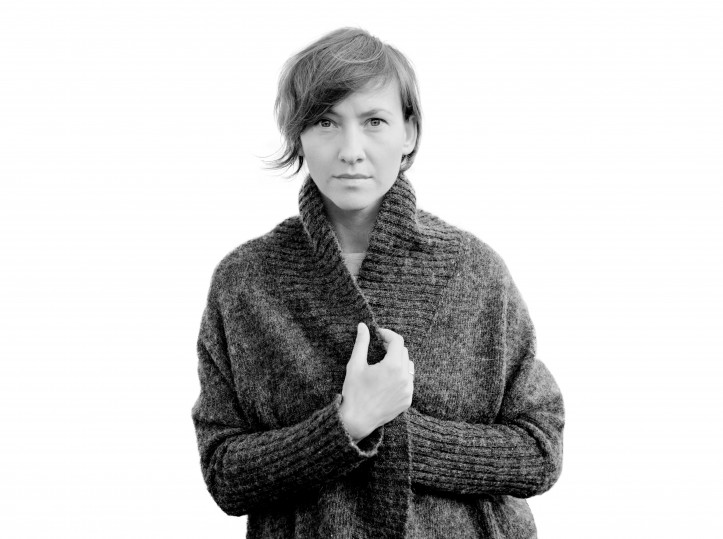
Ilona Wiśniewska:
Reporter and photographer, author of the books Białe. Zimna wyspa Spitsbergen [White: The Cold Island of Spitsbergen], Hen. Na północy Norwegii [Faraway: On the North of Norway], and Lud. Z grenlandzkiej wyspy [A People: Reportage from Greenland]. She has been awarded several accolades, including the Travelers Award 2017, and the Golden Owl awarded by the Club of Polish Intellectuals’ in Vienna. Born in 1981, she now lives in the north of Norway. Translated from the Polish by Aga Zano

